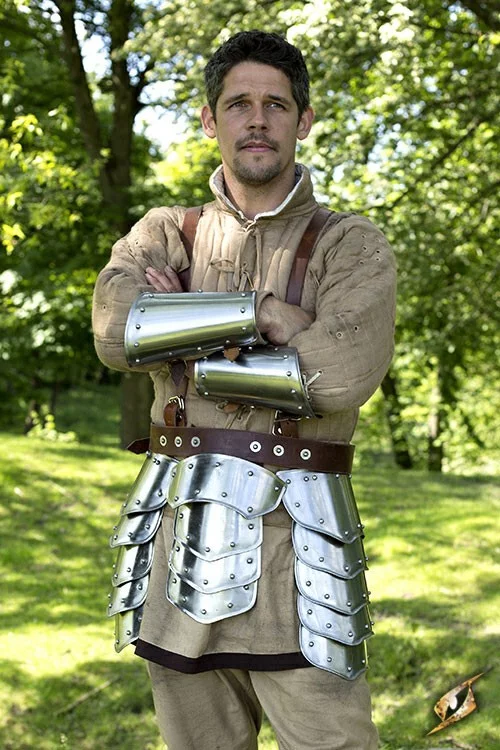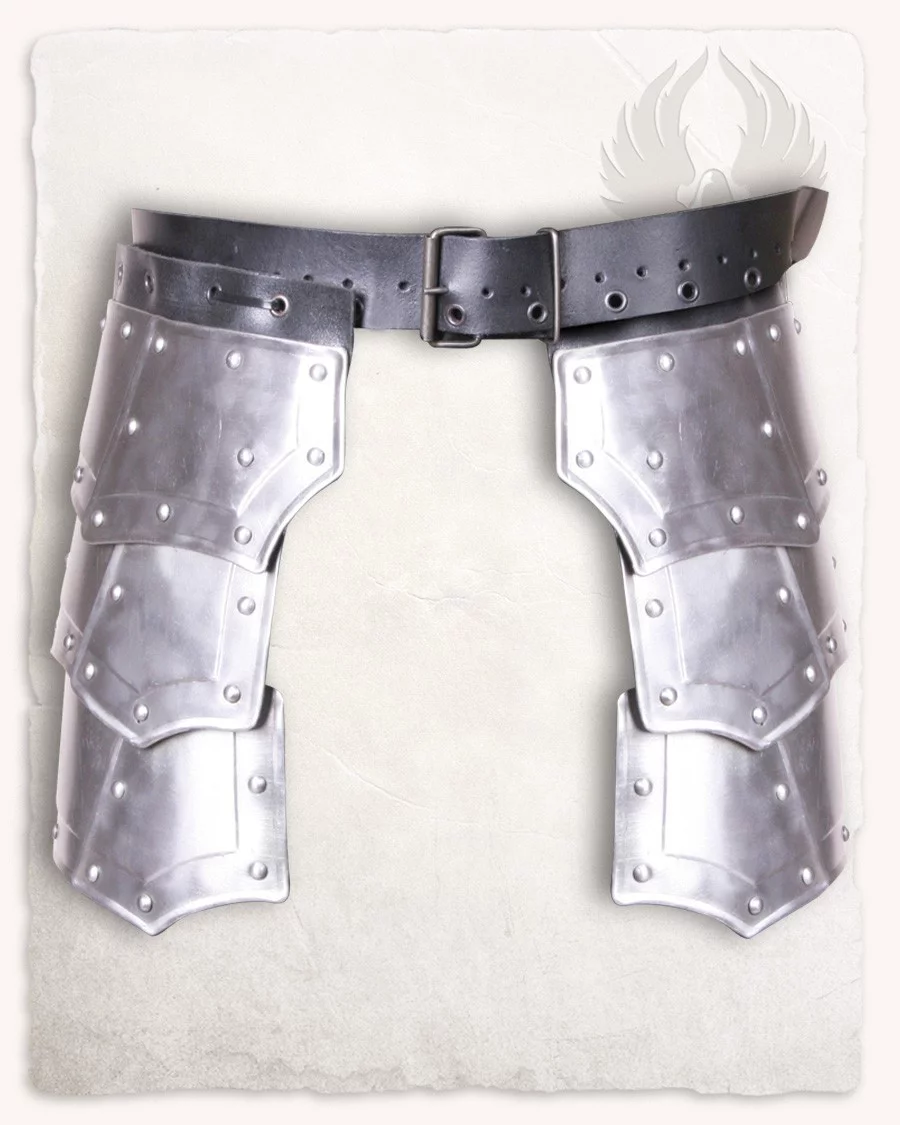What are Escarcelas?
Escarcelas, derived from the Italian term scarsella, are fascinating historical pieces that played an essential role in the armor of knights during the 14th and 15th centuries, particularly in Italy. These pieces were not only functional but often featured artistic designs and various styles that reflected the cultural richness of the time.
In the context of medieval armor, escarcelas were protective elements suspended from the belt, secured to the skirt of the breastplate with straps and buckles. Their fundamental purpose was to cover the weak point located between the skirt of the breastplate and the greaves, protecting the groin area and preventing the adversary's lances from inflicting damage on one of the knight's most vulnerable areas.

Characteristics and Evolution of Escarcelas
- Design:
- They generally consist of plates shaped like tiles, with an edge on the vertical axis.
- They were worn symmetrically, one on each side of the body, although in cavalry armor, the right escarcela could be shorter than the left to facilitate mounting.
- Evolution:
- Initially, they were nailed to the skirt of the breastplate, but later they were secured with straps to provide greater flexibility and mobility.
- During the 15th century, the transformation into Gothic armors allowed the use of curved and radiated edges, improving aesthetics and functionality.
- From the 16th century onwards, escarcelas were made in multiple articulated pieces, providing superior mobility for knights on the battlefield.

Variations in Design
- Foot combat armors: Often included additional escarcelas that hung from the backplate to protect the coccyx.
- 15th-century armors: Some versions featured two smaller escarcelas flanking the main ones, thus improving thigh coverage.
- French armors: Until 1470, escarcelas were of equal dimensions, creating an aesthetic effect similar to a plate skirt.
Materials and Construction
Escarcelas were made from different materials, defined by their use and context:
- Metal: Generally steel, with thicknesses of up to 1.2 mm, ensuring resistance without compromising movement.
- Leather: Some versions, especially for historical reenactments or LARP (live-action role play), were made of leather, offering a lighter alternative.
Escarcelas are a clear example of how functionality and aesthetics came together in medieval armor, not only providing protection but also reflecting the culture and lifestyle of an era influenced by war and cavalry. These pieces continue to be of interest to historians, collectors, and enthusiasts of historical reenactment.
















